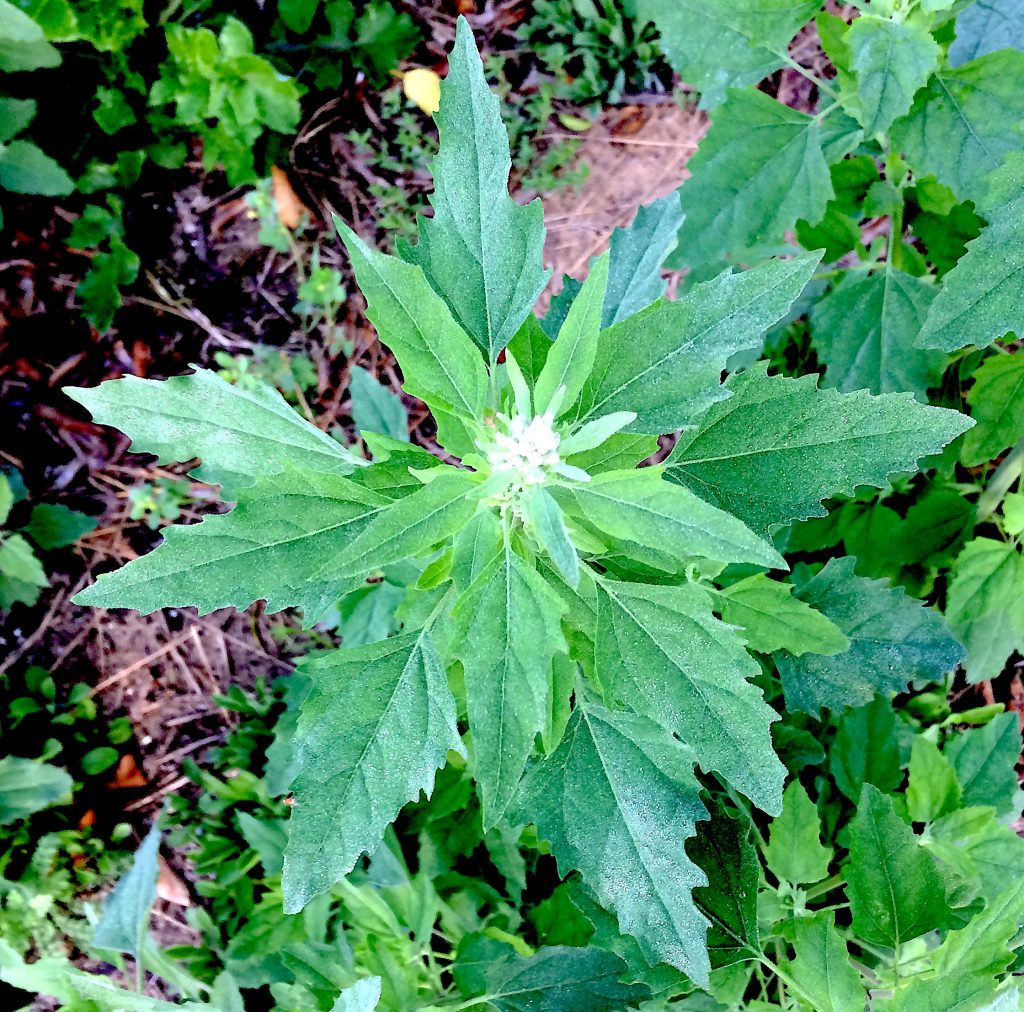
Lamb’s Quarters… Fat Hen… and where to find it.

My step-father built the house we lived in and the horse and hay barns next door. As the building season is short in Maine this took several years. Thus the front yard was totally ignored until my mother demanded one spring that something intentional grow there. She had grass in mind. So my step-father took several wheelbarrows of chaff from the bottom of the hay barn and spread it on what would be the lawn. Within a few weeks it grew a huge crop of Wild Mustard. The second flush was Lamb’s Quarters, also called Fat Hen.
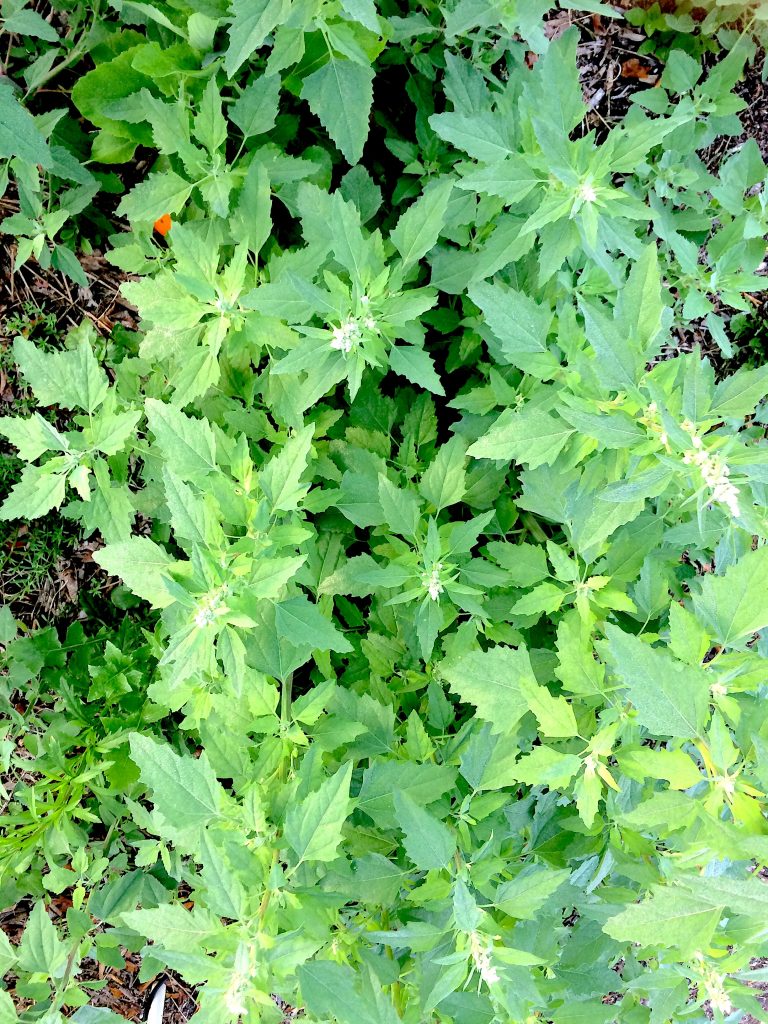
One day not long after that a neighbor was visiting, a chicken farmer named William Gowen. As he left to walk home he ask my father if he could have a few Lamb’s Quarters. My father said he could. Mr. Gowen pulled up about eight five-foot high plants, hefted them over a shoulder, and happily carried them home to eat. Until then I had no idea they were edible. As Mr. Gowen was also a good gardener I am sure any Lamb’s Quarter that dared to grow in his garden also became dinner. I was reminded of him while on the way to my foraging class in Ocala Saturday. Along the way I saw a lot of Lambs Quarters in several citrus groves.
The species is actually easy to find this time of year because citrus groves are not manicured much in the winter. Lambs Quarters can grow through their entire cycle and not get weeded out. Very mild, the leaves are edible raw or cooked. Lambs Quarters is the closest plant you will find in the wild similar to spinach. You can also eat the seeds. Lamb’s Quarters like disturbed soil and can be found in gardens, along roadsides, and agricultural areas. To read more about them go here.
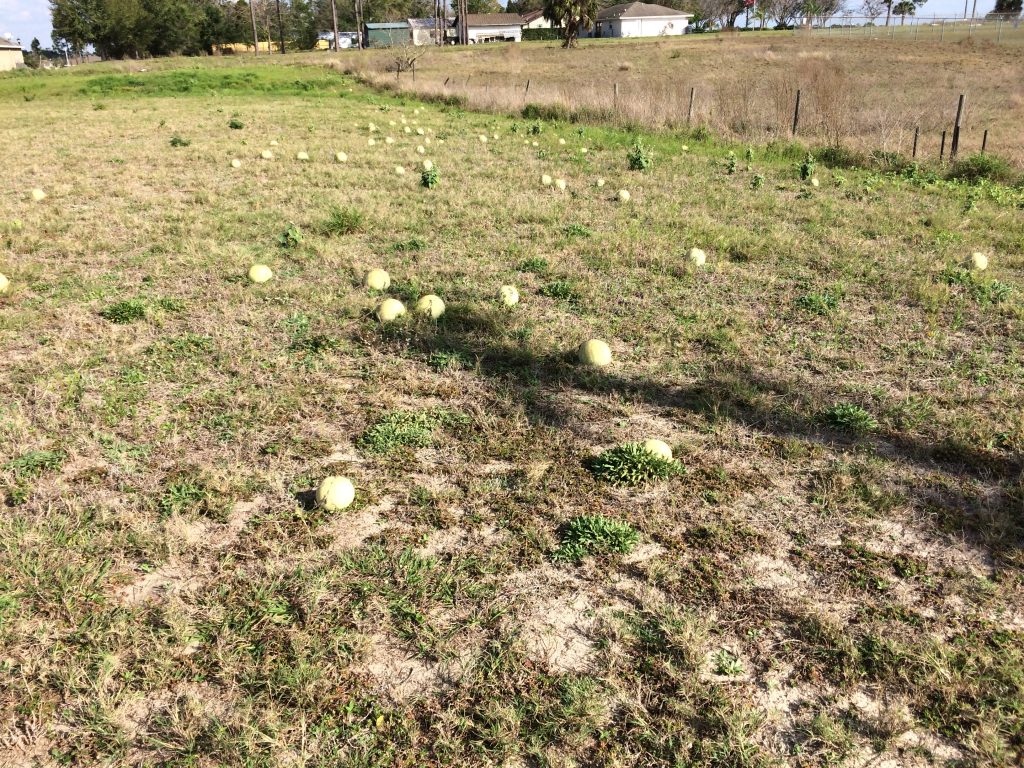
A familiar site this time of year are left over Citron Melons descendants of cultivated citrons from centuries ago. We can see them now because tall grass — which replaced frozen citrus –is dry in many place and died back. But you can also find them in active citrus groves like Lamb’s Quarters. While they are “edible” usually it is only the rind that is processed in various ways. Interestingly citron melons came to Florida before or with the citrus industry. Depending on which expert you want to quote Floridians have been raising citrus for some 506 years or so and citrons grow faster than citrus. Steady sources of modern food made them obsolete particularly as a source of pectin. Citron Melons escaped cultivation and have been taking care of themselves ever since. When I wrote my original article about them information was hard to find and foggy… still is. You can read about them here.
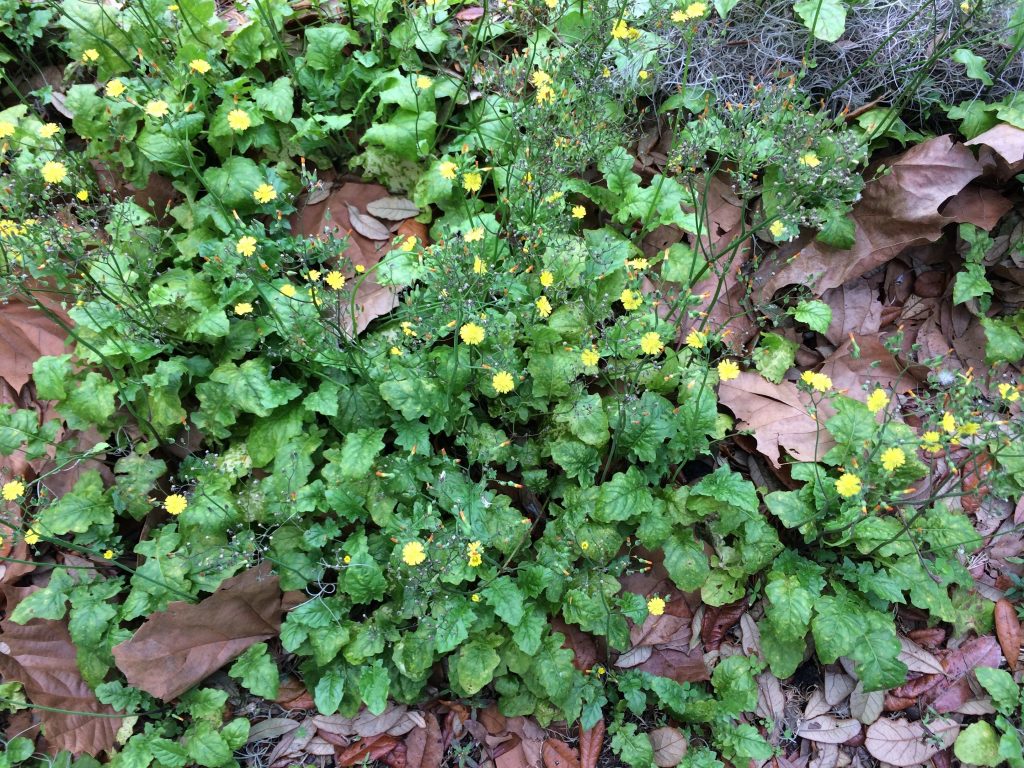
The last average frost date in central Florida is Valentine’s Day though the latest on record is April 24th. Spring may not be here quite but plants we can forage are on the move and will be featured in upcoming newsletters. If you are looking to harvest maple seeds now — they are edible — look for ruddy trees on the sky line. Those will be maples seeding. On a reduced scale now is also a good time to look for flowering Eastern Red Bud trees. They have small — that’s important, small — pink blossoms and no leaves. The blossoms are about half an inch to an inch long. Don’t confuse the Eastern Red Bud with an ornamental tree — the pink Tabebuia — which is also blossoming now except it has huge pink blossoms and no leaves. Neither the pink nor the yellow Tabebuia are edible.
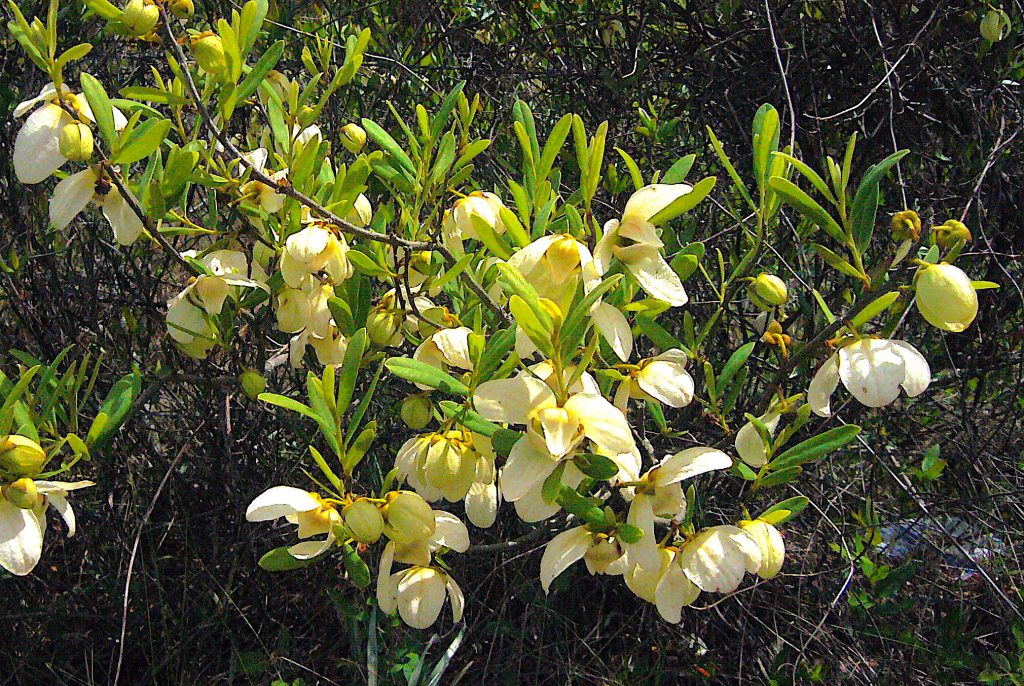
In Port Charlotte this past weekend there were Loquats with ripe fruit but also plenty of green fruit so their season is set to take off. We also saw blooming Suriname Cherries and one Cocoplum bud. There were also a lot of Pawpaws in blossom. They are easy to spot: Look for medium-high shrubs with large whitish-yellow blossoms in pastures. Livestock do not eat them. Also common now throughout the state are wild mustards and radishes. They look similar and are used the same way. These peppery species are easy to spot on the dry dandy banks of roads where they form clumps of light yellow blossoms. Oh… also blossoming this week are wild Blackberries.
There aren’t a lot of hacks or shortcuts in foraging but there are a few. One is if it looks like a garlic or onion and smells like a garlic or onion it is edible. But it must have both: Looks and aroma. If it look like a mint and smells like a mint it is edible. Again, it must have both: Looks and aroma. Some folks try the same collective advice with mushrooms.
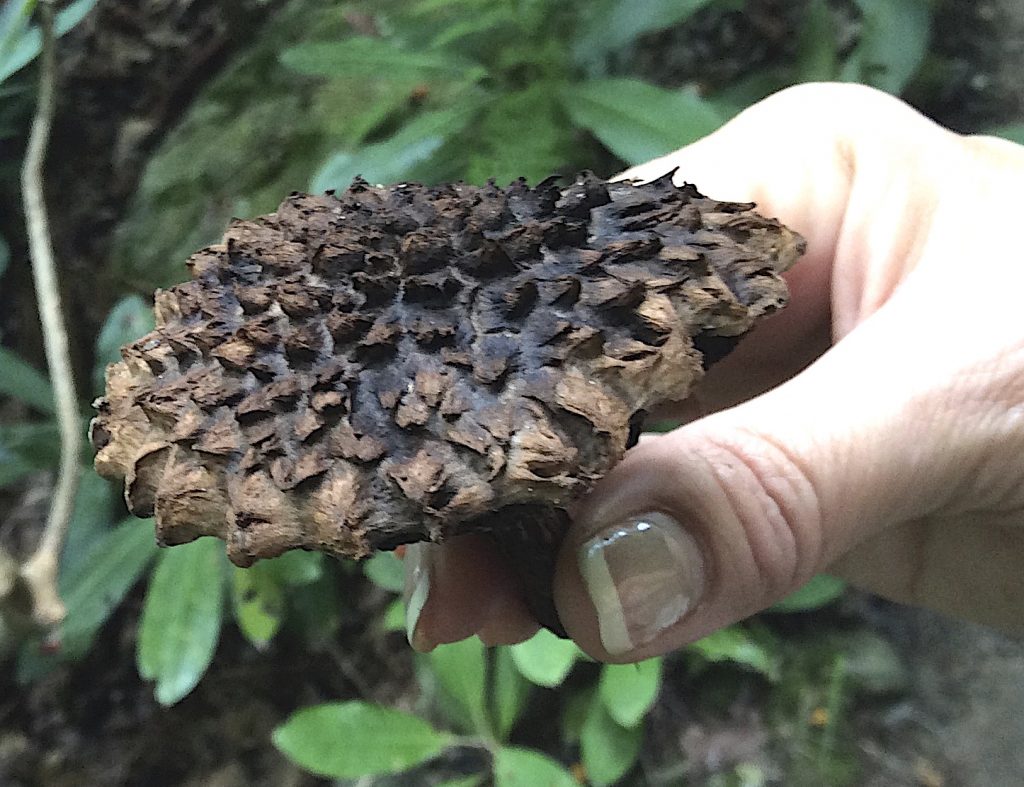
There are rules to follow to decide if a Bolete is edible. Those are trustworthy and expert approved. Some have tried to make some rules for Russulas with less success though no Russula is deadly if you are in good health. More to the point an edible Russula is not a mushroom of great texture or flavor. Perhaps less controversial but a little foggy are edibility rules for the Agaricus group (which when edible are tasty and textureful.) My Ocala foraging class is next to two sports fields and over the years the area has produce Agaricus mushrooms (they are closely related to the button mushrooms you buy in the store, which is an Agaricus.) The problem is while it is fairly easy to spot an Agaricus which Agaricus is more difficult. There are some edibility guidelines but as they are often crafted by California mycologists it makes one wonder if they work well in Florida.
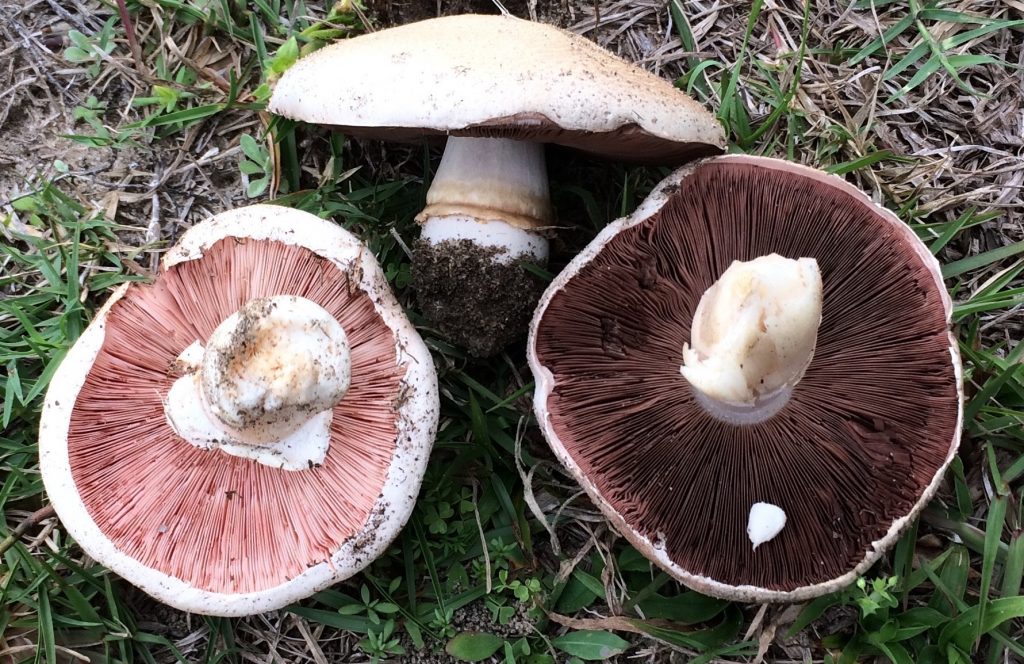
The mushrooms we saw this past Saturday did not fit any Agaricus descriptions in Common Mushrooms of Florida by James Kimbrough. Still we thought it probably A. campestris as they are common in The South and Florida is part of the South. More importantly the crushed stem did not stain yellow and had no particular aroma other than mushroom. That put it into the edible realm and so it was. But from there it gets complicate. Some Agaricus can stain and smell of this or that and be edible or not edible depending upon the color of the stain, the aroma and intensity. You need a good nose to sort them out. Mushrooms is really one of those classes of wild edible you truly have to study with someone. At any rate after watching these sports fields produce mushrooms for several years it is nice to know they are edible.
On a personal note: I have a good reason to be in Maine over the 4th of July including the weekend before and after. I’ve been pondering holding or joining some foraging class there during that time frame. If you know of any possibilities please let me know.
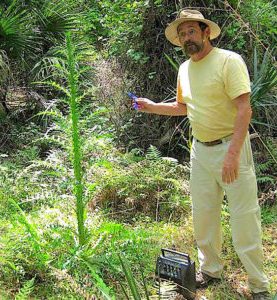
Upcoming Foraging classes: There are no foraging classes this weekend because I am teaching at the Florida Herbal Conference east of Lake Wales. My classes resume in March starting with one in Orlando and another Fort Pierce at George LeStrange Preserve, an area I don’t visit too often.
Saturday, March 2nd, Blanchard Park, 10501 Jay Blanchard Trail, Orlando, FL 32817. Meet near the tennis court near the YMCA building. 9 a.m. to noon.
Sunday, March 3rd, George LeStrange Preserve, 4911 Ralls Road, Fort Pierce, FL, 34981. 9 a.m. to noon. The preserve has no official bathroom or drinking water so take advantage of the various eateries and gas stations before arrival.
Saturday, March 9th, Florida State College, south campus, 11901 Beach Blvd., Jacksonville, 32246. 9 a.m. to noon. We will meet at building “D” next to the administration parking lot.
Sunday, March 10th, Haulover Canal, Merritt Island National Refuge, north of the Kennedy Space Center, 9 a.m. to noon or later. Because of its shape this class requires the most walking and climbing, about four miles. We meet at the end of the northwest jetty. Take the annual sprig time change into account that day so you are on time.
Saturday March 16th, Wickham Park: 2500 Parkway Drive, Melbourne, FL 32935-2335. 9 a.m. to noon. Meet at the “dog park” inside the park.
Sunday, March 17th, Red Bug Slough Preserve, 5200 Beneva Road, Sarasota, FL, 34233. 9 a.m. to noon.
Saturday, March 23rd, Blanchard Park, 10501 Jay Blanchard Trail, Orlando, FL 32817. Meet near the tennis court near the YMCA building. 9 a.m. to noon.
Sunday, March 24th, Bayshore Live Oak Park, Bayshore Drive. Port Charlotte. 9 a.m. to noon. Meet at the parking lot at the intersection of Bayshore Road and Ganyard Street.

Donations to upgrade EatTheWeeds.com have gone well. Thank you to all who have contributed to either via the Go Fund Me link, the PayPal donation link or by writing to Green Deane POB 941793 Maitland FL, 32794. There are many needs left such as expanding the foraging teacher page and the page on monotypic edibles. I’m still having a hard time finding articles I wrote! There’s always something and such things get more complex and expensive every year. Indeed, the average email cost to send each newsletter is $20.
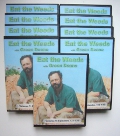
All My Videos are available for free on You Tube. They do have ads on them so every time you watch a Green Deane video I get a quarter of one cent. Four views, one cent. Not exactly a large money-maker but it helps pays for this newsletter. If you want to see the videos without ads and some in slightly better quality you can order the DVD set. It is nine DVDs with 15 videos on each for a total of 135 videos. Many people want their own copy of the videos or they have a slow service and its easier to order then to watch them on-line. The DVDs make a good gift for that forager you know especially on long, cold winter months. Individual DVDs can also be ordered or you can pick and choose. You can order them by clicking on the button on the top right hand side of this page (if your window is open wide enough.) Or you can go here.
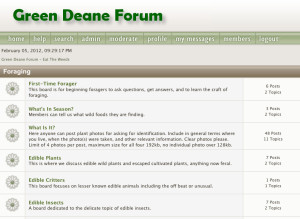
Want to identify a plant? Looking for a foraging reference? Do you have a UFO, an Unidentified Flowering Object you want identified? On the Green Deane Forum we chat about foraging all year. And it’s not just about warm-weather plants or just North American flora. Many nations around the world share common weeds so there’s a lot to talk about. There’s also more than weeds. The reference section has information for foraging around the world. There are also articles on food preservation, and forgotten skills from making bows to fermenting food. One special section is “From the Frightening Mail Bag” where we learn from people who eat first then ask questions later. You can join the forum by clicking on “forum” in the menu.
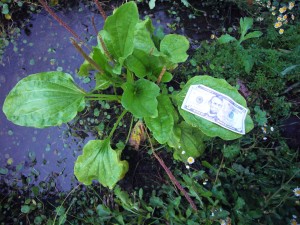
Plantago Power: It was a dark and rainy … morning… and I was searching through the gloom along the road for a wild mustard/radish for my foraging class. It was gray day, the kind my step-father called “lowery.” (Yes, there is such a word.) Something caught my eye so I pulled Van Go over and headed towards a watery ditch. Then I heard a baby cry. Seriously. The figure I thought was a bag lady with a stuffed shopping cart was actually a bundled-up woman with a baby stroller waiting for a bus. Things look different on drabby days. And the plant I thought might be a mustard in the ditch most certainly was not. It was a Plantago, the largest one I have ever seen. That was worth a picture and posting on the Green Deane Forum. There one of our regular members, Josey, who has an eye for detail and a whole lot of knowledge, offered it as Plantago rugelii rather than P. major. They look similar but one difference is the P. rugelii has purple at the base of the petiole, P. major is white. Unlike P. major, which is from Europe, P. rugelii is native to North America. It is odd that we don’t hear more about it. Like all Plantagos P. rugelii is edible and medicinal.
If you would like to donate to Eat The Weeds please click here. Or you can use my Go Fund Me link, or by writing to Green Deane POB 941793 Maitland FL, 32794
This is weekly issue 343.

